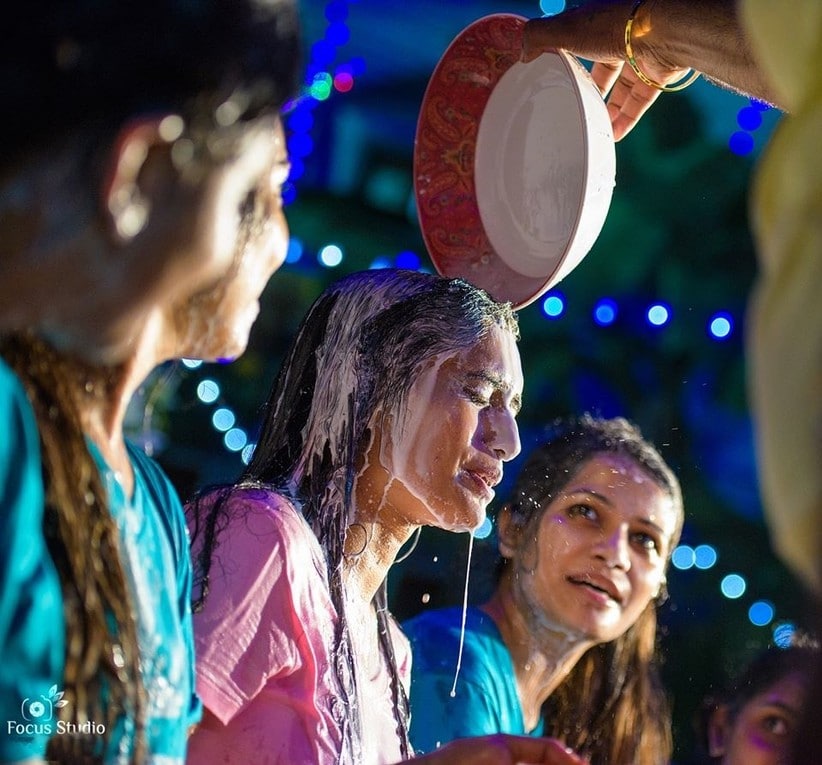Goan Wedding Traditions
- January 11, 2018
-
19,888
- 4 min

Goan weddings & its Traditions!!
Culture and tradition run deep in Goan blood. Goan weddings aren’t just a day’s celebration; but are spread over 4-5 days. We Goans definitely take every celebration especially weddings very seriously ! The Wedding Season’s have evolved with even Monsoon Weddings becoming Popular in Goa .Months of April, May and December witness a huge number of weddings with almost all elite wedding businesses booked a year in advance.
We bring before you Few of our age old custom & traditions that add our Fun & Frolic to this Big Occasion in Life.
The first tradition that is a must for a Goan wedding is ‘Chuddo’
In the Goan wedding culture, bangles are an important bridal accessory. It is a custom where the Goan bride has to wear the best bangles possible. These bangles of a particular colour and design are called ‘chuddo’. They are usually purchased from the regular/local bangle-seller of the village, known as the volar or kankonkar who is often invited over to the home. The bangles are made of glass and very delicate.
This ceremony is usually performed at the house of the maternal uncle of the bride. The colors of the bangles represent the vigor of one’s married life. The number and colour of the bangles differ from village to village.
For the ceremony, the bangles are fitted onto the wrists of the bride-to-be by the volar. Relatives take the opportunity and get some bangles for themselves as well.
The family offers money as a token of blessing and is kept in a tray placed near the bangle-seller. The chuddo ceremony is common among the Hindus and Christians of Goa.
Also, the bride receives gifts from relatives and wears the ceremonial bangles, eight to nine in number on her right wrist and seven to eight on her left
The second traditional is a ritual called ‘Ros’
This is the anointing ceremony where both the bride and the groom are anointed with coconut milk by their parents, relatives, neighbours and friends in their respective houses.
This is usually done 2 to 3 days prior to the wedding. This ceremony symbolizes the beginning of new life. The coconut milk is used and is said to cleanse or purify the couple before the wedding, which also signifies the end of their single lives.
The ones anointing the couple have a lot of fun as they get to break eggs on the couple’s heads and throw coins or cash into the bowls which are later given to the maids that helped in the preparations. The Coconut milk juice was considered as a Nourishment during the olden times when the likes of shampoo’s & Conditioners had not seen the light of day.
Bhuim Jevon
This is a meal in honour of the family’s ancestors known as ‘bikaraimche jevon’. This meal is for the beggars and poor people in and around the village. This Jevon was more of an Offering & Thanksgiving to the dead ancestors of the family. There are many such traditions That are now being kept away and instead Lunch is offered to Orphanages & old age homes.
‘Opsun divnchem’ or ‘Oopsun’
The tradition where the bride is formally given away by the father or the guardian of the bride.
After the wedding ceremony comes the ‘Appoune’ or ‘Porthopon’.
In this tradition, the bride’s family invites the groom’s family over to their house usually the next day of the wedding. The bride wears a bright red saree or dress called ‘Saddo’.
It starts with the pre-wedding tradition, then the day the bride and groom get hitched, ‘second day’ and there’s surely more.
There are many traditional customs that take place in the span of these 4 to 5 Wedding days, they might be small traditions but they are Valued because they have a deeper meaning to them. For Example After the Roce Ceremony , the Bride & the Groom was restricted from Leaving the house. This was done as a precautionary measure keeping them safe from any accidents or injuries just before the marriage.
Goan Wedding traditions differ from each Village to the other ,Some Believe, Some Not. Its Purely an Individual choice. The whole intention being to Celebrate the big day with great pomp & joy ,safe & sound. The whole motto being in strengthening the family ties & building bonds of togetherness, Enjoying every bit of the wedding & wishing the Couples a Happy Married life !
That is how amazing our big fat Goan weddings are !
